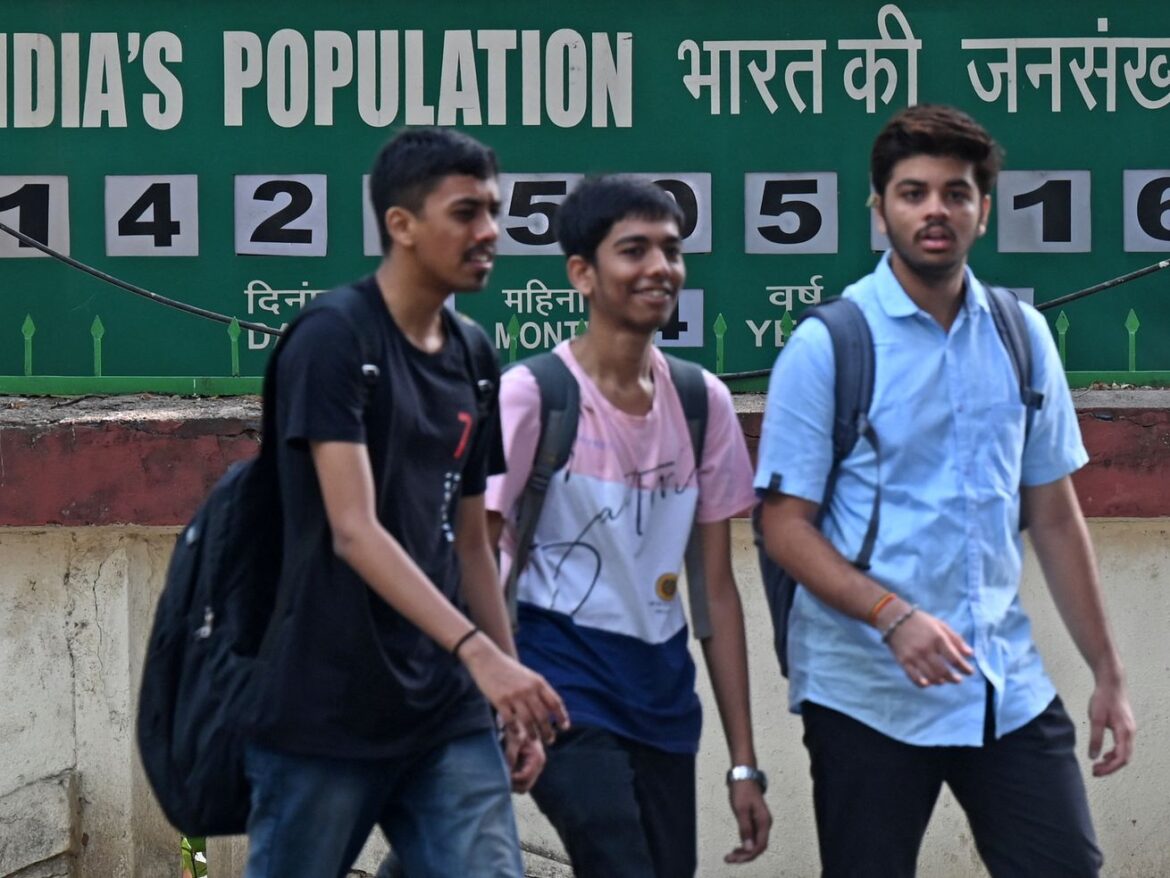Why numbers can only go so far for the world’s new most populous nation.
China has officially been the world’s most populous country since 1950, when the United Nations began keeping statistics. But it’s almost certainly had the most people for centuries, if not far longer. China was the first country to pass 1 billion, in 1982, and with an estimated 1.426 billion people in 2022 — more than four times the numbers and population density of the US — it’s at the top of the global table.
But not anymore. According to UN demographers, this month India will have matched and then will surpass China in total population, most likely by the time you read this. This isn’t precisely a surprise — India’s fertility rate has been above China’s since years before the latter country implemented its one-child policy in 1979, and demographers have long projected that it was only a matter of time before India caught up. But that day was still expected to be years later — not right now.
What does this mean? Beyond forcing a generation of schoolchildren to remake their mental map about world population, not much for the moment. Both countries are still massive, home to nearly three out of every eight people on the planet.
In China, decades of the world’s most aggressive and coercive population controls have arguably worked too well. Its fertility rate — the number of expected births per woman over the course of their reproductive lives — is just 1.3, among the lowest levels in the world, and it’s been below the 2.1 rate needed for a country to replace its population through births alone since the early 1990s.
Decades of depressed fertility means the country’s population — which is already declining — will continue to age, putting serious economic constraints on an economy that has long been boosted by the world’s largest pool of young laborers.
India, by contrast, has seen its fertility rate slide much more gradually, from the nearly six children per woman it experienced in the population bomb 1960s to around 2.1 today. That has both fueled India’s continual population growth — which is projected to peak at 1.7 billion in 2064, according to the UN’s middle-of-the-road estimate — and kept it younger overall, meaning India won’t just be larger than China but will also have far more young, potentially productive workers.
Demography is not destiny
Historically, that kind of population distribution has been a recipe for economic success. East Asian nations like Japan and South Korea — and later China, for that matter — cashed in on a demographic dividend in the second half of the 20th century, as rapid drops in fertility meant lots of workers with fewer children to support, which helped make those workers more productive. Based on raw demography alone, India is poised to reap the same advantages, which has led some forecasters to herald the “Indian Century.”
But remember how I said that demography is not destiny? A huge surplus of young workers is a great thing, but only if a country can grow fast enough to find productive work for all of them — and while India has made enormous strides in reducing extreme poverty, that’s something the country still struggles with.
If you can’t find work for your citizens, population can go from boon to bomb. And while India’s fertility transition looks like a smooth bunny slope at the national level, those numbers conceal huge differences regionally. India’s population is growing most rapidly in poorer states in the north, while in the developed south, population has already peaked and low fertility rates look closer to China’s.
For India to make the most out of its favorable demographic position, it will need to take some pages from China’s book, beginning with female empowerment. Only about one out of every five women in India have formal employment, barely more than half the rate in China. That means fighting ingrained gender discrimination in India and ensuring access to both family planning, which varies widely in the country, and access to education.
India also faces a very different political landscape than China. The world’s most populous country is also the world’s largest democracy. That, too, can be a strength, but at the moment India is experiencing marked democratic backsliding, as Prime Minister Narendra Modi rewrites electoral rules, attacks Muslim minorities, and stifles the press. The apparently politically motivated disqualification in March of Modi’s main political rival, Congress Party leader Rahul Gandhi, is another low point for a country that the NGO Freedom House now only rates as “partly free.”
The simple fact that China is no longer the world’s most populous country underscores the fact that we are entering entirely new demographic territory. Barring radical change, our children will live to see global population peak and begin to shrink.
For the world to continue to grow economically in the decades ahead, we’ll need to get far more out of every worker. And India, which likely can’t fully depend on the kind of export-driven manufacturing growth that has lifted almost every other country out of extreme poverty, will need to chart its own path into the future.
A version of this story was initially published in the Future Perfect newsletter. Sign up here to subscribe!



